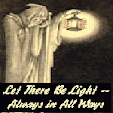Dec 23, 10:25 AM (ET)
By Arthur Spiegelman
LOS ANGELES (Reuters) - It's almost like every party you have ever been to, everyone crowds into the kitchen. Except in this case there are 6 billion guests.
New Yorker magazine cartoonist Bruce Eric Kaplan, who specializes in anxious moments, adult-like children and child-like adults, poses a simple question in his new book -- what would happen if the entire world showed up at a Brooklyn apartment for a holiday party?
The answer in "Every Person on the Planet: An Only Somewhat Anxiety-Filled Tale for the Holidays," combines common sense with comic surrealism and fits in the tradition of cartoons books aimed at adults.
The genre was made famous by the late New Yorker cartoonist James Thurber and continued on by artists such as Jules Feiffer.
The hosts, an unremarkable couple named Edmund and Rosemary, decide to invite the whole world because they're afraid of leaving someone out. They wear themselves out writing out the invitations but figure that at least 1.5 billion of the 6 billion invited guests won't show up.
When everyone arrives, the food runs out and Edmund and Rosemary wish they had left out two continents.
The party, like normal parties, divides between people who have eaten dinner but are still nibbling on the hors d'oeuvres and those who had come expecting a full dinner and are wolfing down whatever they can find.
'I CAN'T DRAW A CAR'
The line for the bathroom is nightmarish and Rosemary is outraged at the end of the night at the shape the world has left it in. One billion people have run into their exes and more than a quarter of the world's population has had too much to drink.
Kaplan, 41, who pens his cartoons in the morning and then goes to work as a writer for television series such as "Seinfeld" and HBO's "Six Feet Under," said he was inspired to write the book by Feiffer's and Thurber's work.
He added that he would feel a lot better if he thought he were a better artist. To hear one of the stars of the New Yorker cartoon stable tell it, he cannot draw basic objects.
"I can't draw a car. I can't draw sheep. I can't see the shape of a car," he said ruefully.
He does draw cats and even has a book about them -- "The Cat That Changed My Life: 50 Cats Talk Candidly About How They Became Who They Are."
Over the years, Kaplan's cartoons have won praise for their nearly shapeless characters' musing over life, death and almost everything in between.
A typical Kaplan cartoon, signed BEK, might show a boy with a shovel standing next to an elaborate sand castle on a beach. "It's incredible," his mother exclaims while the boy thinks "Then why do I feel like such a hack?"
Another cartoon has a boy angrily clutching a paper graded F with a teacher explaining, "Look I'm sorry, I didn't respond to the material."
Kaplan says his technique is simple: "I think of something that would interest me, and then I think of the worst that might happen."
The approach might also apply to his television writing -- after all, "Six Feet Under" series end with the writers killing off every character that the audience has come to love.
















0 Comments:
Post a Comment
<< Home